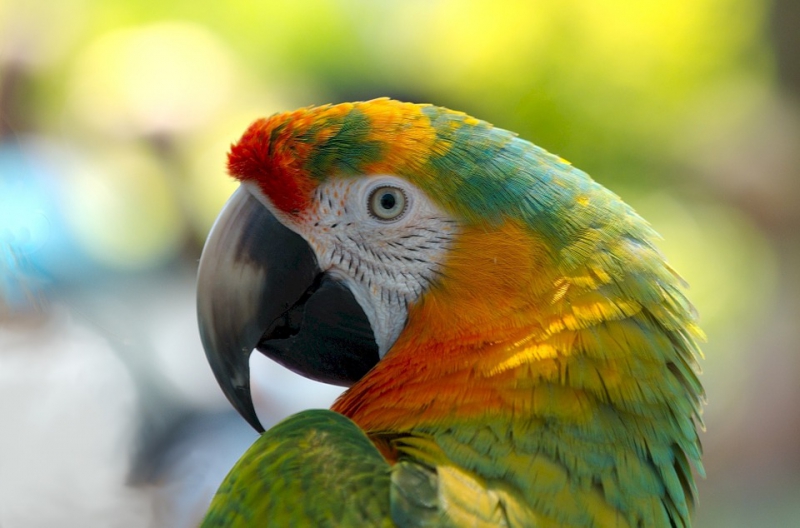Hundreds of parrots gathering on a cliff near the Tambopata River in Peru. The only reason they gather here is to eat the soil. What's in this dirt?
Earthen bird
Geophagy, which ingests soil, is in fact common in animals and birds. But it is not easy for humans to identify the cause. Two alternative hypotheses have been raised over the years to find out why wild parrots in the Amazon watershed are doing this. First, some soils have the ability to neutralize or absorb plant toxins. To do this, parrots eat soil with plants. That is, the soil neutralizes toxins in prey plants. The other is that the increased nutritional requirements of breeding have led to the necessity of atopy.
The first hypothesis, the neutralization of toxic food, however, does not support much evidence at this time. The second hypothesis, however, is related to the depletion of seasonal nutrients that the parrot can ingest. The area where the parrots eat the soil is far from the sea, and the local plants that they eat contain very little sodium. According to Elizabeth Hobson of the Santa Fe Institute, sodium is very rare in the rainforest area, but the cliffs where the birds gather contain a sufficient amount of sodium. Sodium is an important nutrient for the body that maintains a balance between water and electrolyte, and it also plays a role in muscle contraction and proper nerve function.
The mud in the Amazon watershed, which is one of the parrot's most preferred areas, contains about 40 times higher sodium than other common vegetable foods. The ratio of sodium to potassium is also 4500 times higher. In other words, sodium and potassium are essential feedstocks for parrots and other wildlife.
 |
| ▲ Photo Source: Pixar Bay |
Why is sodium rich?
Donald Brightsmith, an assistant professor at Texas A & M University, speculated that ancient waters had sent sodium to the mud for why so much sodium was available in the parrots' mud.
In fact, sodium is an essential nutrient for Amazon animals that only eat vegetable food. This is related to the fact that animal foods are rich in sodium while plant foods contain more potassium. Potassium has the disadvantage of interfering with sodium intake and also increasing sodium excretion, necessitating the consumption of sodium separately for plant-eating animals.
Natural nutrition
According to the Tambopata Macaw Project, a study of the ecology and conservation of Tambo Pattas where parrots gather, 18 parrots gathered to eat the mud here have been recorded for decades. The crowd of parrots coming out of the dense jungle to eat the soil is truly spectacular. You can also see flying doves and other large birds caught in the cracks of parrots.
Professor Bright smith, who led the project, explained that birds eating soils generally do not consume other insects or animal proteins. When you eat insects or animals, you do not need to consume sodium separately because it is an alternative source of sodium. As a result, in order to test two hypotheses related to the parasitism of the parrot, the team comparing the food availability and the seasonal patterns and observing the nesting cycle of the parrot showed that the maximum intake of soil in the breeding season was the main cause of the parrot infestation I got evidence that it is related to the need for sodium.


